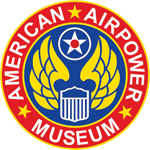 W
WThe American Airpower Museum is an aviation museum located on the former site of Republic Aviation at Republic Airport in East Farmingdale, New York. It maintains a collection of aviation artifacts and an array of aircraft spanning the many years of the aircraft factory's history.
 W
WThe Buffalo and Erie County Naval & Military Park, formerly known as The Buffalo Naval and Servicemen's Park, is a museum on the shore of Lake Erie in Buffalo, New York. It is home to several decommissioned US Naval vessels, including the Cleveland-class cruiser USS Little Rock, the Fletcher-class destroyer USS The Sullivans, and the submarine USS Croaker. All three are open to the public for tours.
 W
WCamp Shanks was a United States Army installation in the Orangetown, New York area. Named after Major General David Carey Shanks (1861–1940), it was situated near the juncture of the Erie Railroad and the Hudson River. The camp was the largest U.S. Army embarkation camp used during World War II.
 W
WCastle Williams is a circular fortification of red sandstone on the northwest point of Governors Island, part of a system of forts designed and constructed in the early 19th century to protect New York City from naval attack. It is a prominent landmark in New York Harbor. Together with Fort Jay, it is managed by the National Park Service as part of Governors Island National Monument.
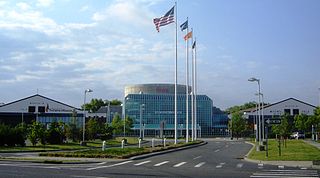 W
WThe Cradle of Aviation Museum is an aerospace museum located in Garden City, New York on Long Island to commemorate Long Island's part in the history of aviation. It is located on land once part of Mitchel Air Force Base which, together with nearby Roosevelt Field and other airfields on the Hempstead Plains, was the site of many historic flights. So many seminal flights had occurred in the area that, by the mid-1920s, the cluster of airfields was already dubbed the "Cradle of Aviation", the origin of the museum's name.
 W
WUSS Croaker (SS/SSK/AGSS/IXSS-246), a Gato-class submarine, was the first ship of the United States Navy to be named for the croaker, any of various fishes which make throbbing or drumming noises.
 W
WFort Crown Point was a British fort built by the combined efforts of both British and provincial troops in North America in 1759 at a narrows on Lake Champlain on what later became the border between New York and Vermont. Erected to secure the region against the French, the fort is in upstate New York near the town of Crown Point and was the largest earthen fortress built in the United States. The fort's ruins, a National Historic Landmark, are now administered as part of Crown Point State Historic Site.
 W
WCrown Point State Historic Site is the site of a former military stronghold at the south end of the wider part of Lake Champlain. The location is in Essex County, New York, United States. The site is on a peninsula in the town of Crown Point, New York.
 W
WDunkirk Light, also known as Point Gratiot Light, is an active lighthouse located at Point Gratiot on Lake Erie in New York state.
 W
WThe Empire State Aerosciences Museum is a non-profit museum which strives to "educate, entertain and excite with experiences in air and space". Established in 1984 and chartered by the New York State Department of Education, the museum is located on 27 acres (110,000 m2) of land on the western perimeter of the Schenectady County Airport in Glenville, New York, United States.
 W
WFort Jay is a coastal star fort and the name of a former United States Army post on Governors Island in New York Harbor, within New York City. Fort Jay is the oldest existing defensive structure on the island, and was named for John Jay, a member of the Federalist Party, New York governor, Chief Justice of the Supreme Court, Secretary of State, and one of the founding fathers of the United States. It was built in 1794 to defend Upper New York Bay, but has served other purposes. From 1806 to 1904 it was named Fort Columbus, presumably for explorer Christopher Columbus. Today, the National Park Service administers Fort Jay and Castle Williams as the Governors Island National Monument.
 W
WFort Niagara is a fortification originally built to protect the interests of New France in North America. It is located near Youngstown, New York, on the eastern bank of the Niagara River at its mouth, on Lake Ontario.
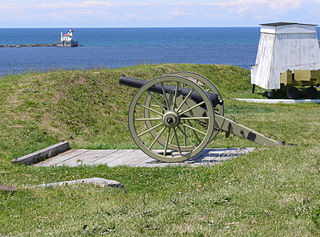 W
WFort Ontario is an American historic fort situated by the City of Oswego in Oswego County, New York. It is owned by the state of New York and operated as a museum known as Fort Ontario State Historic Site.
 W
WFort Schuyler is a preserved 19th century fortification in the New York City borough of the Bronx. It houses a museum, the Stephen B. Luce Library, and the Marine Transportation Department and Administrative offices of the State University of New York Maritime College. It is considered one of the finest examples of early 19th century fortifications. The fort was named in honor of Major General Philip Schuyler of the Continental Army.
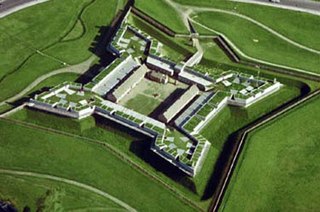 W
WFort Stanwix was a colonial fortress whose construction commenced on August 26, 1758, under the direction of British General John Stanwix, at the location of present-day Rome, New York, but was not completed until about 1762. The bastion fort was built to guard a portage known as the Oneida Carry during the French and Indian War. Fort Stanwix National Monument, a reconstructed structure built by the National Park Service, now occupies the site.
 W
WFort Stanwix National Monument is a historic national monument in Rome, New York, managed by the National Park Service (NPS). The current fort is a reconstruction of the historic Fort Stanwix occupying approximately 16 acres (6.5 ha) of downtown Rome. The fort site—although not the reconstruction itself—is listed in the National Register of Historic Places.
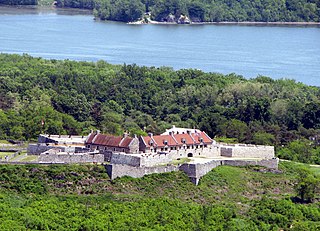 W
WFort Ticonderoga, formerly Fort Carillon, is a large 18th-century star fort built by the French at a narrows near the south end of Lake Champlain, in northern New York, in the United States. It was constructed by Canadian-born French military engineer Michel Chartier de Lotbinière, Marquis de Lotbinière between October 1755 and 1757, during the action in the "North American theater" of the Seven Years' War, often referred to in the US as the French and Indian War. The fort was of strategic importance during the 18th-century colonial conflicts between Great Britain and France, and again played an important role during the Revolutionary War.
 W
WFort Totten is a former active United States Army installation in the New York City borough of Queens. It is located on the Willets Point peninsula on the north shore of Long Island. Fort Totten is at the head of Little Neck Bay, where the East River widens to become Long Island Sound. While the U.S. Army Reserve continues to maintain a presence at the fort, the property is now owned by the City of New York.
 W
WFort Wadsworth is a former United States military installation on Staten Island in New York City, situated on The Narrows which divide New York Bay into Upper and Lower halves, a natural point for defense of the Upper Bay and Manhattan beyond. Prior to closing in 1994 it claimed to be the longest continually garrisoned military installation in the United States. It comprises several fortifications, including Fort Tompkins and Battery Weed and was given its present name in 1865 to honor Brigadier General James Wadsworth, who had been killed in the Battle of the Wilderness during the Civil War. Fort Wadsworth is now part of the Staten Island Unit of Gateway National Recreation Area, maintained by the National Park Service.
 W
WFort William Henry was a British fort at the southern end of Lake George, in the province of New York. The fort's construction was ordered by Sir William Johnson in September 1755, during the French and Indian War, as a staging ground for attacks against the French position at Fort St. Frédéric. It was part of a chain of British and French forts along the important inland waterway from New York City to Montreal, and occupied a key forward location on the frontier between New York and New France. In 1757, the French general Louis-Joseph de Montcalm conducted a successful siege that forced the British to surrender. The Huron warriors who accompanied the French army subsequently killed many of the British prisoners. The siege and massacre were famously portrayed in James Fenimore Cooper's novel The Last of the Mohicans.
 W
WUSS Growler (SSG-577) was an early attempt by the U.S. Navy to field a cruise missile submarine that would provide a nuclear deterrent using its second series of cruise missiles. Built to deliver the Regulus I cruise missile, Growler was the second and final submarine of the Grayback class, fourth ship of the United States Navy to be named after the growler. Since Regulus I and Regulus II programs had problems, Growler and Grayback were the only two submarines built in this class as instead, the U.S. Navy veered its nuclear deterrence efforts into submarine launched ballistic missiles (SLBMs)—the Polaris missile program.
 W
WUSS Intrepid (CV/CVA/CVS-11), also known as The Fighting "I", is one of 24 Essex-class aircraft carriers built during World War II for the United States Navy. She is the fourth US Navy ship to bear the name. Commissioned in August 1943, Intrepid participated in several campaigns in the Pacific Theater of Operations, most notably the Battle of Leyte Gulf. Decommissioned shortly after the end of the war, she was modernized and recommissioned in the early 1950s as an attack carrier (CVA), and then eventually became an antisubmarine carrier (CVS). In her second career, she served mainly in the Atlantic, but also participated in the Vietnam War. Her notable achievements include being the recovery ship for a Mercury and a Gemini space mission. Because of her prominent role in battle, she was nicknamed "the Fighting I", while her frequent bad luck and time spent in dry dock for repairs—she was torpedoed once and hit by four separate Japanese kamikaze aircraft—earned her the nicknames "Decrepit" and "the Dry I". Decommissioned in 1974, in 1982 Intrepid became the foundation of the Intrepid Sea, Air & Space Museum in New York City.
 W
WThe Intrepid Sea, Air & Space Museum is an American military and maritime history museum in New York City with a collection of museum ships. It is located at Pier 86 at 46th Street, along the Hudson River, in the Hell's Kitchen neighborhood on the West Side of Manhattan. The museum showcases the aircraft carrier USS Intrepid, the cruise missile submarine USS Growler, a Concorde SST, a Lockheed A-12 supersonic reconnaissance plane, and the Space Shuttle Enterprise. On the lower deck there is also a reproduction of a World War I biplane.
The Iron Building is a historic building at the Watervliet Arsenal in Watervliet, New York. It housed the Watervliet Arsenal Museum until it was closed in fall 2013 for security reasons.
 W
WUSS Little Rock (CL-92/CLG-4/CG-4) is one of 27 United States Navy Cleveland-class light cruisers completed during or shortly after World War II, and one of six to be converted to guided missile cruisers. She was the first US Navy ship to be named for Little Rock, Arkansas. Commissioned in mid-1945, she was completed too late to see combat duty during World War II. After an initial South American cruise, she spent the next few years serving off the east coast of the U.S., in the Caribbean, and in the Mediterranean. Like all but one of her sister ships, she was retired in the post-war defense cutbacks, becoming part of the Atlantic Reserve Fleet in 1949.
 W
WMontauk County Park, formerly known as Theodore Roosevelt County Park, is located approximately three miles (4.8 km) east of Montauk, New York. The park is 1,157 acres (4.68 km2) in size, running from Montauk Highway north to Block Island Sound and is bordered on the east by Montauk Point State Park.
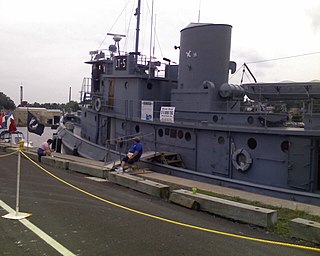 W
WNash is a World War II U.S. Army Large Tug (LT) class seagoing tugboat built as hull #298 at Jakobson Shipyard, Oyster Bay NY as a Design 271 steel-hulled Large Tug delivered November, 1943. Originally named Major Elisha K. Henson (LT-5), in 1946 she was renamed John F. Nash by the U.S. Army Corps of Engineers. Since retirement from the Corps of Engineers, LT-5 has been renamed Major Elisha K. Henson. As of the 1992 date of its listing as a National Historic Landmark, LT-5 was believed to be the last functional U.S. Army vessel that participated in Normandy landings, but at least one other survives.
 W
WThe National Warplane Museum is a warbird and military history museum currently located on the grounds of the Geneseo Airport in Geneseo, New York. Founded in 1994, the museum restores, flies, and displays vintage military aircraft from the Second World War and Korean War eras. In 1998, after a split developed in the membership with two thirds of the group wanting to move to a modern airport and grow, the National Warplane Museum moved to the Elmira-Corning Regional Airport near Horseheads, New York. In 2010, the Horseheads museum reinvented itself as the Wings of Eagles Discovery Center. In 2013, the National Warplane Museum name was reacquired by the 1941 Historical Aircraft Group which remained in Geneseo. The museum hosts the annual Geneseo Airshow, billed as the "Greatest Show On Turf."
 W
WNational Purple Heart Hall of Honor is located along NY 300 in the Town of New Windsor, New York, United States, less than two miles south of the Town of Newburgh line and not far from the City of Newburgh. It is a Purple Heart national registry of military personnel that have been injured or killed during combat. In 1782, at his headquarters, George Washington created the Badge of Military Merit to be given to enlisted men and non-commissioned officers for meritorious action. The museum is located at the New Windsor Cantonment State Historic Site, the last encampment of the Continental Army.
 W
WSackets Harbor Battlefield State Historic Site is a historically important location in Jefferson County, New York, United States. The historic site is south of the Village of Sackets Harbor, bordering Lake Ontario in the Town of Hounsfield. Two battles were fought near this location during the War of 1812. Some 3,000 men worked at the shipyard building warships, and the village was fortified and garrisoned with thousands of troops.
 W
WSampson State Park is a 2,070-acre (8.4 km2) state park located in Seneca County, New York. The park is south of the city of Geneva in the Town of Romulus on the east shore of Seneca Lake, one of the Finger Lakes.
 W
WUSS Slater (DE-766) is a Cannon-class destroyer escort that served in the United States Navy and later in the Hellenic (Greek) Navy. The ship was named for Frank O. Slater of Alabama, a sailor killed on the cruiser USS San Francisco during the Naval Battle of Guadalcanal. He was posthumously awarded the Navy Cross for gallantry in action and the Purple Heart. Following service during World War II, the ship was transferred to Greece and renamed Aetos. Decommissioned in 1991, the destroyer escort was returned to the United States.
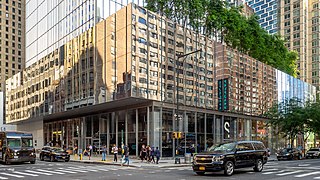 W
WSpyscape is a private, for-profit espionage museum and experience in Midtown Manhattan, New York City. It opened in February 2018 to a positive reception from local and international media. It features seven main experience zones, as well as a James Bond exhibition, 007xSpyscape.
 W
WStony Point Battlefield is the location of the 1779 Battle of Stony Point during the American Revolutionary War. It is a National Historic Landmark and has a museum.
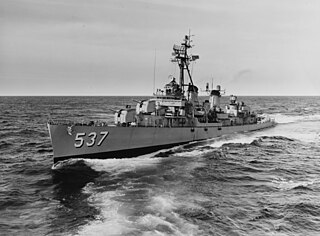 W
WUSS The Sullivans (DD-537) is a Fletcher-class destroyer. She is a United States Navy ship named in honor of the five Sullivan brothers aged 20 to 27 who lost their lives when their ship, USS Juneau, was sunk by a Japanese submarine during the Naval Battle of Guadalcanal on 13 November 1942. This was the greatest military loss by any one American family during World War II. She was also the first ship commissioned in the Navy that honored more than one person.
 W
WThe United States Military Academy (USMA), also known as West Point, Army, Army West Point, The Academy, or simply The Point, is a four-year federal service academy in West Point, New York. It was originally established as a fort that sits on strategic high ground overlooking the Hudson River with a scenic view, 50 miles (80 km) north of New York City. It is the oldest of the five American service academies.
 W
WThe United States Military Academy (USMA), also known as West Point, Army, Army West Point, The Academy, or simply The Point, is a four-year federal service academy in West Point, New York. It was originally established as a fort that sits on strategic high ground overlooking the Hudson River with a scenic view, 50 miles (80 km) north of New York City. It is the oldest of the five American service academies.
 W
WLasdon Park and Arboretum is a public park containing gardens and an arboretum. It is located on New York State Route 35, Somers, New York, and open to the public daily without charge.